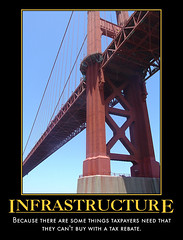Yesterday I was the beneficiary of a kindness from a stranger. As I was walking up the path to school at 7:58, the driver of a truck pulled into the front drop-off circle, rolled down his window and called out to me that I had left my lights on. Then he drove around the circle and exited back out to Mission Blvd. I had been parked facing Mission; he must have noticed my lights, seen where I was walking and stopped to help me avoid a AAA call later that afternoon for a dead battery.
Nice.
We don't always get to see such evidence of random acts of kindness in our daily lives, but I have been ruminating on one of my favorite things about technology that lets me see many more instances of the kindness of strangers impacting my life.
Connections. It's all about the connections. And community.
Sometimes it's intentional communities centered around a common interest. Sometimes it's accidental or casual or even anonymous.
For example, I belong to an online community that has been amazingly supportive and helpful to me in the last couple of years that is full of women who I am likely to never see in person. They are scattered across the US and Europe (Minneapolis, Austin, Oregon, Provincetown, Savannah, Amsterdam, Berkeley -- okay, I see the one in Berkeley all the time) and yet they reach out to me when I need advice, support or just checking up on.
But I also rely on the generous nature of literally millions of people about whom I will never know the slightest thing except that they post information on the internet. Often, I'm just looking for an answer to question that has piqued my interest. (Who was
Belle Barth? When did
Edwin Booth die?) Thank goodness for
Wikipedia and all the people who make it work!
And I think I must sit down at our kitchen computer at least 4 or 5 times a week to look up a recipe. My family reaps the benefit of cooks far better than I who have taken the time to post their favorite recipes. And I love that I can compare 4 or 5 or 12 different variations to come up with something that will fit my family's taste and pantry.
Recently it got more personal as I attempted to recreate my mother's version of my paternal grandmother's Portuguese Beans (not the Hawaiian variety). I lost the recipe years ago and recently began craving them. I started out with recipe sites and Google searchs, augmented that with consultation with real live Portagees like Bernie Puccini, and am getting closer every batch.
My favorite of the recipes I found was on a webpage with a brief explanation of how the writer's mother always kept a pot on the back burner of the stove for his dad. It was sweet and personal and his recipe was very close to my mother/grandmother's recipe. I'm grateful to him for posting it.
The good news is I'm now making the beans weekly, until I feel like I get it right, and my daughter loves them. So thanks to the generosity of strangers, one of my family traditions gets to live a little longer.
P.S. Here's a link to a paper at the Pew Research Group from 2007 about the way community is changing online,
Communities, Learning and the Internet. Among the interesting points made, 84% of internet users belong to some kind of online community and those communities are varied, socially meaningful, and rely on their members to filter and assess information for their groups. Hmm.








